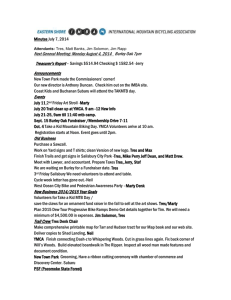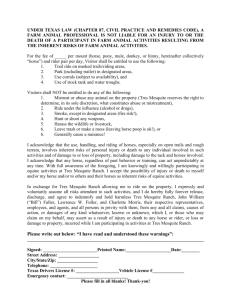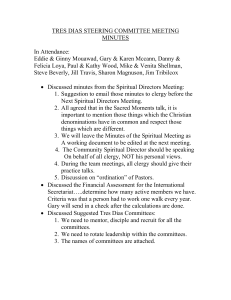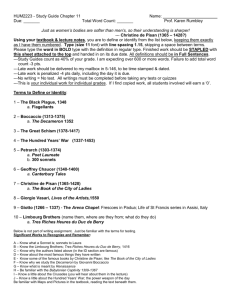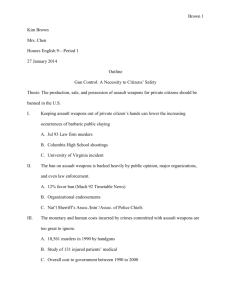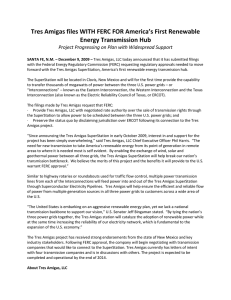Unit 30
advertisement
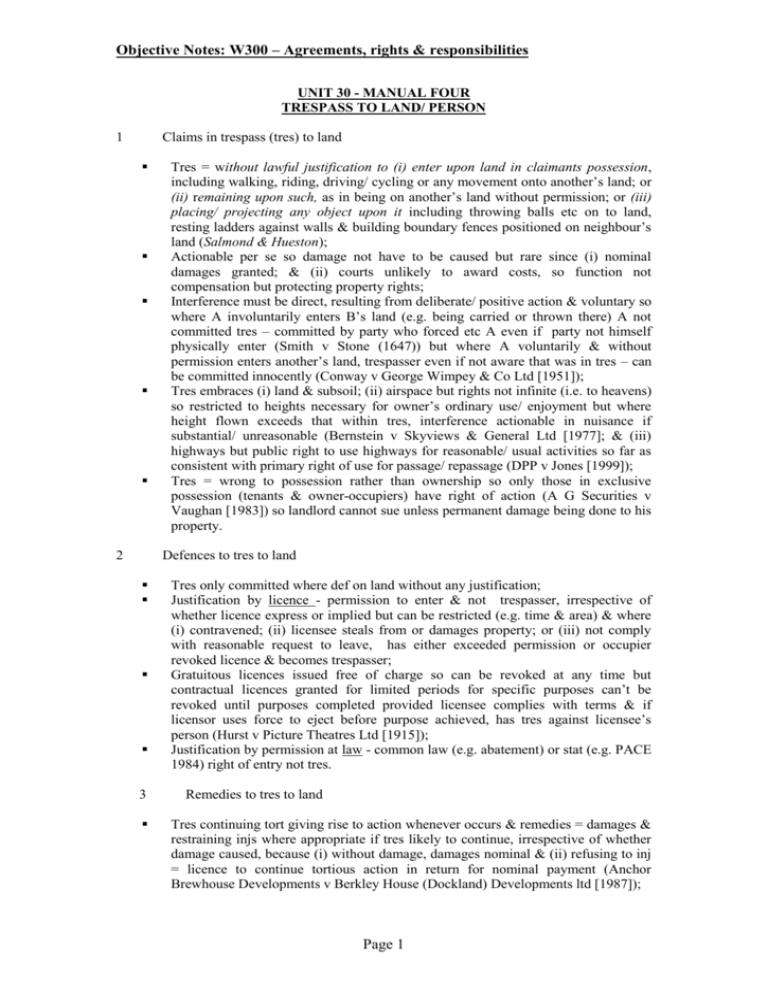
Objective Notes: W300 – Agreements, rights & responsibilities UNIT 30 - MANUAL FOUR TRESPASS TO LAND/ PERSON 1 Claims in trespass (tres) to land 2 Tres = without lawful justification to (i) enter upon land in claimants possession, including walking, riding, driving/ cycling or any movement onto another’s land; or (ii) remaining upon such, as in being on another’s land without permission; or (iii) placing/ projecting any object upon it including throwing balls etc on to land, resting ladders against walls & building boundary fences positioned on neighbour’s land (Salmond & Hueston); Actionable per se so damage not have to be caused but rare since (i) nominal damages granted; & (ii) courts unlikely to award costs, so function not compensation but protecting property rights; Interference must be direct, resulting from deliberate/ positive action & voluntary so where A involuntarily enters B’s land (e.g. being carried or thrown there) A not committed tres – committed by party who forced etc A even if party not himself physically enter (Smith v Stone (1647)) but where A voluntarily & without permission enters another’s land, trespasser even if not aware that was in tres – can be committed innocently (Conway v George Wimpey & Co Ltd [1951]); Tres embraces (i) land & subsoil; (ii) airspace but rights not infinite (i.e. to heavens) so restricted to heights necessary for owner’s ordinary use/ enjoyment but where height flown exceeds that within tres, interference actionable in nuisance if substantial/ unreasonable (Bernstein v Skyviews & General Ltd [1977]; & (iii) highways but public right to use highways for reasonable/ usual activities so far as consistent with primary right of use for passage/ repassage (DPP v Jones [1999]); Tres = wrong to possession rather than ownership so only those in exclusive possession (tenants & owner-occupiers) have right of action (A G Securities v Vaughan [1983]) so landlord cannot sue unless permanent damage being done to his property. Defences to tres to land 3 Tres only committed where def on land without any justification; Justification by licence - permission to enter & not trespasser, irrespective of whether licence express or implied but can be restricted (e.g. time & area) & where (i) contravened; (ii) licensee steals from or damages property; or (iii) not comply with reasonable request to leave, has either exceeded permission or occupier revoked licence & becomes trespasser; Gratuitous licences issued free of charge so can be revoked at any time but contractual licences granted for limited periods for specific purposes can’t be revoked until purposes completed provided licensee complies with terms & if licensor uses force to eject before purpose achieved, has tres against licensee’s person (Hurst v Picture Theatres Ltd [1915]); Justification by permission at law - common law (e.g. abatement) or stat (e.g. PACE 1984) right of entry not tres. Remedies to tres to land Tres continuing tort giving rise to action whenever occurs & remedies = damages & restraining injs where appropriate if tres likely to continue, irrespective of whether damage caused, because (i) without damage, damages nominal & (ii) refusing to inj = licence to continue tortious action in return for nominal payment (Anchor Brewhouse Developments v Berkley House (Dockland) Developments ltd [1987]); Page 1 Objective Notes: W300 – Agreements, rights & responsibilities 4 Where A wrongly occupies B’s land, B may sue to recover but must show right to immediate possession on basis of his title’s strength rather than A’s weakness & if A in possession, B must positively prove superior right but where B formerly in possession, = evidence of better title which A’s subsequent possession doesn’t defeat; Jus terti (=3rd party rights): Doe d Carter v Barnard (1849) held where shown that 3rd party’s title better right of possession than claimant’s, such situation defence, irrespective of claimant’s title being better than def’s & whilst doubt as to how comprehensive jus terti is, where def acquires possession from claimant, def cannot dispute claimant’s title; Claimant may claim mesne profits = compensatory damages for period of dispossession, including sum representing reasonable rent for such period; If squatters/ other such trespassers discovered, property owner not obliged to seek re-possession through courts but may use force reasonably necessary to remove tres but not course of action recommended because might result in disturbance & breach of peace (McPahail v Persons Unknown [1973]). Claims in tres to person Direct interference with the person/ liberty of another, actionable per se so injury not required & embraces assault, battery & false imprisonment but must be committed intentionally by direct positive/ deliberate means so unintentional acts = Neg (Letang v Cooper [1942]0 Assault = A’s act causing B to have reasonable apprehension that A will inflict battery on B but not require A to physically contact B – sufficient that A’s conduct leads B to apprehend application of force - & whilst frequently assault precedes battery, not always happen (e.g. where A hits a sleeping B, B will not apprehend force application so A has committed battery without assault) & A can assault B without also committing battery where B apprehends A can carry out threat immediately (Stephens v Myers (1830)) but not where such attack impossible (e.g. A threatens from passing vehicle); By Read v Coker (1853), words can prevent action being assault where they show no intent to harm (Tuberville v Savage (1669)) but mere threat not accompanied by gesture/ action to carry it out not assault; however by R v Ireland [1997], verbal threats may = assault where victim believes may be carried out sufficiently in near future to = immediate, although written words may not so constitute immediacy, could still = assault in certain situations & even if threat not sufficiently immediate, def may be liable under Wilkinson v Downton intentional physical harm tort if victim suffers actual harm; Battery = intentional & direct application of force to another but not necessary A makes physical contact with B’s person as embraces A soaking, spitting or shooting B & def must be hostile but intention to injure not required (Wilson v Pringle [1986]) although F v West Berkshire Health Authority [1989] doubted hostility requirement correct since didn’t reconcile with overall principle that, without lawful excuse, any touching of another’s body = battery; Act must be voluntary – A must intend to contact B – but not require A himself to touch B & where A inadvertently hits C, A liab to C where (i) A’s act intentional (albeit to hit B); & (ii) A directly applied force to C, irrespective of whether A had intention to injure C, unless A shows justification for conduct (Livingstone v Ministry of Defence [1984]); False imprisonment (FI) = erroneous infliction of bodily restraint not expressly/ impliedly authorised by law (Winfield & Jolowicz) but not element that claimants be aware liberty denied as can be imprisoned without knowing it (e.g. asleep) & have grounds for action even if FI began & ceased whilst claimants in such state – any restraint within defined bounds which is restraint in fact may = FI - but where Page 2 Objective Notes: W300 – Agreements, rights & responsibilities 5 claimant unaware & suffers no harm, can only expect nominal damages, so knowledge irrelevant to liab but relevant to damages (Murray v Ministry of Defence [1988]); Restraint must be total so that claimants cannot break confinement by moving in any direction but leaving reasonable means of escape – albeit not that preferred - not FI (Bird v Jones (1845)) & reasonable = that which reasonable person would have discovered & can safely use, even if claimant then commits tres (Wright v Wilson (1699)); Occupiers may stipulate reasonable exit conditions & are entitled to prevent inconsistent leaving since this = breach of contract & whilst liberty cannot be restrained without lawful authority, not follow that, where entrant cannot escape unaided, occupier compelled to immediately release him & claimants only entitled to use release facilities under terms on which they entered (Robinson v Balmain New Ferry Co Ltd [1910] & Herd v Weardale Steel, Coal & Coke Co Ltd [1915]) but note academic criticism (Tan) - not just to permit liberty restraint to enforce contract breaches as without stat authority, A should not imprison B to enforce civil claim. Defences to tres to person Where A expressly/ impliedly consents to B’s acts, B not liab as in medical treatment (express consent in signing form) & sport (implied consent to physical contact within sport’s rules), which releases liab for interference otherwise = tres but must be real – patient to be informed in broad terms nature of intended treatment - & invalid if induced by misrepresenting treatment’s nature (Chatterton v Gerson [1981]); Where policeman lawfully arrests under valid warrant, not FI &, provided only reasonable force used, not battery; Where assault/ battery occurs in course of self-defence, force used must be reasonable & proportionate to that from (or threatened by) claimant & only justified in self-defence & not when committed after attack in retaliation (Cockcroft v Smith (1705)) & occupiers may use reasonable force to oust trespassers, provided def has 1st asked them to leave, although where trespasser entered forcibly, force may be used without 1st asking him to leave but reasonable force defending property usually less than defending person (Green v Goddard (1702); Doctors may rely on necessity if operate without adult patient’s consent where patient (i) unconscious & not safe to wait until he regains consciousness; or (ii) mentally disabled so cannot understand nature/ purpose of treatment but, in all situations treatment must be in patient’s best interests, either to (i) save life; or (ii) ensure improvement to/ prevent deterioration of physical/ mental health (F v West Berkshire Health Authority [1989]). Where applicable, contrib. neg may apply, subject to normal principles. Page 3
